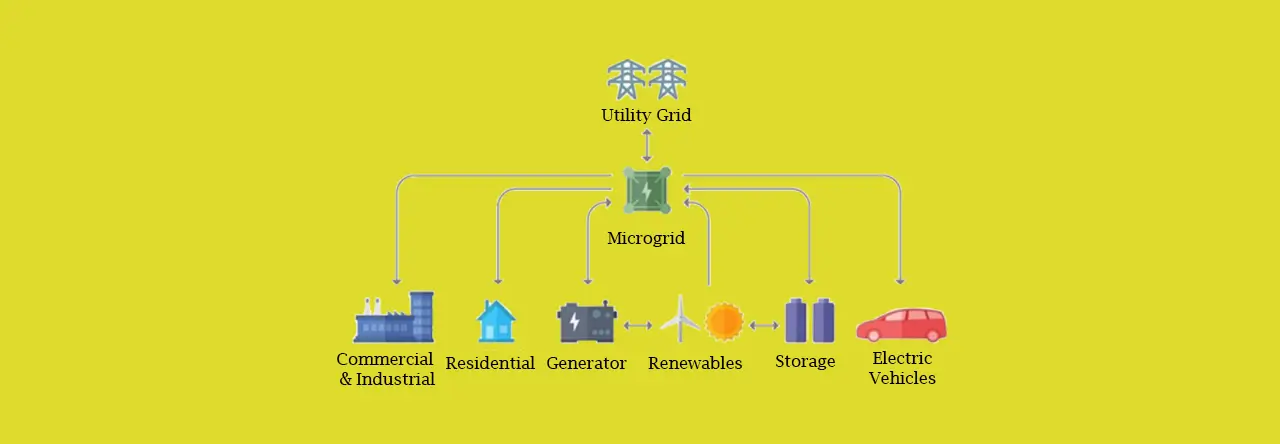After the sun sets in Yucatán, Mexico, a microgrid powers a boy’s reading light inside of his off-grid home.
In California, the warden of a maximum security prison uses a microgrid to ensure his facilities stay electrified.
Microgrids restored power to Puerto Rican communities reeling from Hurricane Maria’s destruction.
So what are these life-changing microgrids?
What a microgrid is
A microgrid is a tool that independently stores energy and generates electricity.
Microgrids give us power without relying on a massive centralized network of poles, wires, generators, and substations run by utility companies – what we commonly refer to as “the grid“.
A microgrid is a smaller, independent grid that electrifies a specific area, building, or individual.
There are many types of microgrids, but all of them have these 3 core components:
- An electricity generator
- An energy reserve
- A power management system
Combining these 3 components to create a microgrid enables us to power electronics, vehicles, homes, businesses, facilities, and even whole communities. Some microgrids are very simple in construction and use, while others are complex systems.
You may just be discovering that microgrids exist, but they’re likely already powering life all around you. Across the globe, utility companies, hospitals, schools, prisons, communities, warfighters, homeowners, travelers, and adventurers use them.
Why? Should you use a microgrid?
Microgrids capabilities
Microgrids enable us to generate our own electricity, unshackling us from relying on large centralized power grids and stockpiling fuel.
The first microgrid was invented by Thomas Edison in New York City in 1882, but only in the past 10 years have they become widely adopted. That’s because recently distributed energy resources (DERs) are increasingly affordable for communities, businesses, and individuals. We’ve also recognized microgrids’ ability to deliver reliable power while many utility companies struggle to do so. Plus, new software and energy programs unlock money-making opportunities for microgrid owners.
Across the globe, we’re using microgrids to…
- Stay safe: Microgrids providing reliable backup power enable us to keep our hospitals, homes, and devices powered even as aging infrastructure and ever more destructive weather lead to more frequent grid outages. After Hurricane Maria hit Puerto Rico, the island’s grid was down for months, which tragically created far more death and destruction than the hurricane itself.
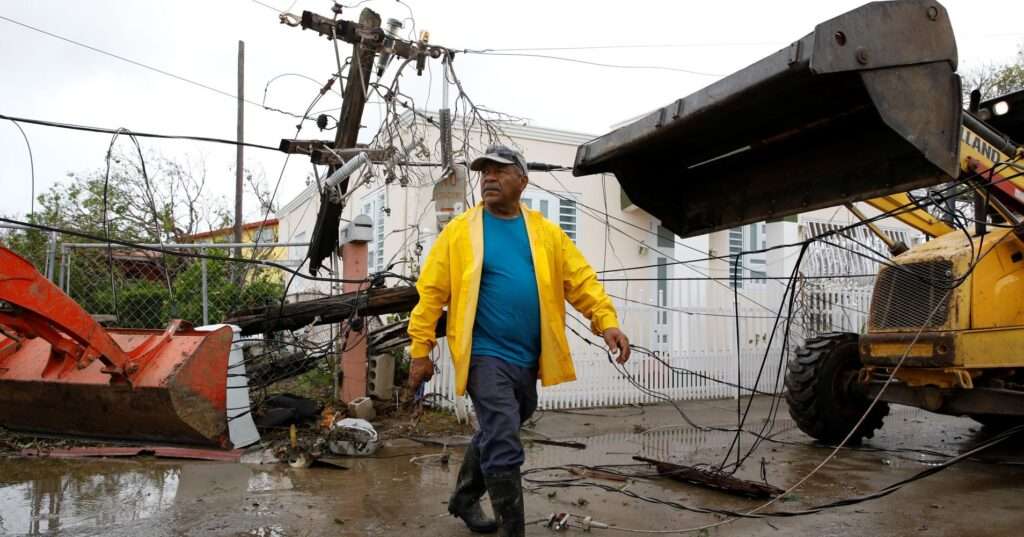
- Relieve stress: Prolonged blackouts are devastating. We’re left in the dark until the utility company can fix the problem…unless we have a microgrid. Microgrids offer families, doctors, soldiers, and even prison wardens the peace of mind that they won’t be left powerless. At the Santa Rita jail in Dublin, California, they built a microgrid to ensure the jail is always electrified and secure.
- Save money: Switching to microgrid power often saves money on energy bills. By locally producing electricity and storing energy, taxpayers avoid the massive costs of building and maintaining power plants and transmission lines. Plus, microgrid owners can make money by selling the electricity and renting their batteries’ extra storage to utility companies. SunPower estimates that their customers with residential microgrids can earn $100-1000/yr.
- Live sustainably: Microgrids powered by clean energy technologies, like solar panels, wind turbines, and fuel cells, produce electricity that’s cheaper and cleaner than utility companies’ production from burning fossil fuels. These renewable microgrids cut air pollution and help us fight the climate crisis.
- Access electricity: 1 billion of us still don’t have electricity at home. Not so long ago, much of the world’s population also didn’t have a phone at home. Then cell phones arrived, and everything changed. Today, microgrids, particularly solar microgrids, are unlocking electricity access in communities that never had access to the grid.
How microgrids work
Microgrids use the energy from sources like gasoline or sunlight to generate electricity and store backup power. Control of when and how the electricity is generated and energy is stored comes from the microgrid’s power management system.
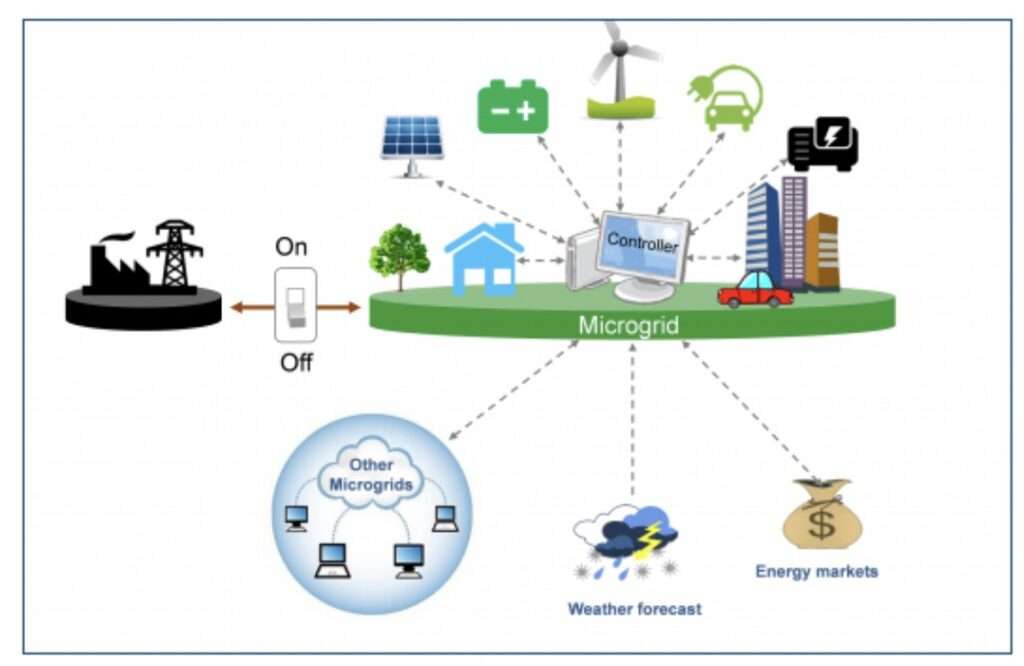
The electricity generator
Electricity generation is a microgrid’s core function. The generators can be combustion engines that burn fossil fuels or clean energy technologies like solar panels, wind turbines, and fuel cells. Regardless of the energy source, they’re designed to reliably provide on-demand power.
The energy reserve
An energy reserve enables microgrids to provide on-demand power. Microgrids store energy in fuel stockpiles, gas tanks, or, commonly, batteries.
The power management
Sophisticated microgrids use software to connect and coordinate the operations of the energy reserve and electricity generator. In doing so, you get control of the microgrid’s energy input, electricity output, and available backup power.
If a microgrid were the human body, then the power management system would be the brain, the reserve is its layer of fat, and the generator is its muscle.
What is not a microgrid
Microgrids require the ability to both generate power and store energy.
So, an electricity generator, like a solar panel, without an energy reserve, like a battery, is not a microgrid. And, an energy reserve without a generator is not a microgrid.
By definition, a microgrid needs to be able to keep the electrons flowing without relying on the grid or external electricity. Rooftop solar panels on a grid-connected home aren’t microgrids because a) they stop producing electricity when the sun sets b) as a safety precaution, they actually stop producing electricity when the grid has an outage.
People are often surprised to learn that solar-powered homes lose power when there’s an outage on the grid. They need to be connected to a home battery to become a microgrid and provide continuous power.
The diversity of microgrids
Microgrids’ uses and users are diverse because microgrids come in so many shapes and sizes. You need to know about the different microgrid configurations to pick one that meets your needs.
Fossil-fuel vs. renewable microgrids
Fossil vs. Renewable.
Dirty vs. Clean.
Traditional vs. Modern.
Dependent vs. Independent.
There are many ways to compare the energy sources our microgrids use.
Since microgrids’ inception, we’ve used diesel and gas-burning engines to generate electricity. Many of these old-school fossil fuel microgrids operate today.
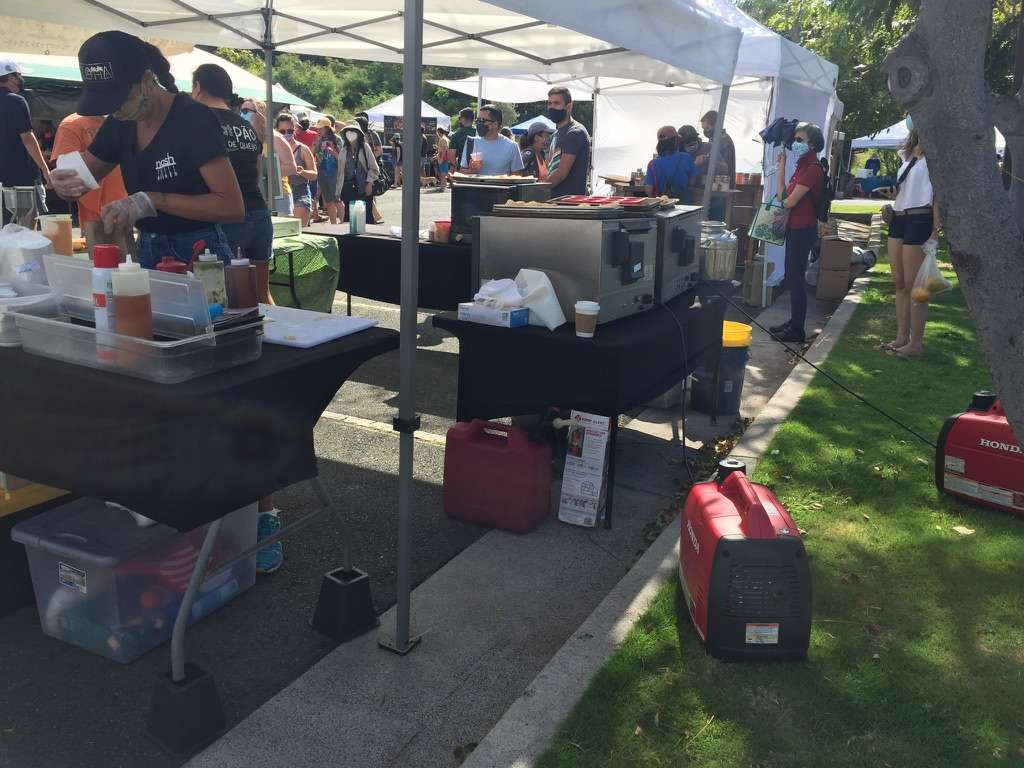
But we can generate electricity more efficiently, sustainably, and cost-effectively this century with clean energy technologies. Renewable microgrids generate electricity with solar panels, wind turbines, hydropower, fuel cells, and heat pumps, which collect energy from locally abundant natural sources.
A microgrid’s energy storage depends on whether it’s fossil or renewable. Fossil microgrids rely on fuel, which requires a stockpile to secure backup power. Renewable microgrids hold power in batteries recharged by locally abundant clean energy.
It’s common to see hybrid microgrids that can generate electricity from fossil fuel and clean energy resources.
It’s Electric Islands’ mission to unlock energy independence. Renewable microgrids are the only microgrids capable of producing electricity without relying on a pipeline or stockpile to supply fuel, making them self-sufficient and true electric islands.
Networked or standalone?
Some microgrids are standalone units others are interconnected networks. Interconnected microgrids are a network of energy storage and electricity generators that form a unified whole. In contrast, standalone microgrids are single units that produce and store all the power in the same location.
Standalone microgrids have generators, such as solar systems, fuel cells, gas generators, wind turbines, and storage devices, like batteries, flywheels, supercapacitors, or compressed air tanks.
Interconnected microgrids’ components are geographically spread apart and use multiple generators and reserves, allowing them to access a more significant electrical load. They frequently service neighborhoods, towns, and large facilities.
Grid connection? It’s up to you.
Microgrids’ utility are in their ability to disperse electricity without drawing on the utility companies’ labyrinth of wires and poles. Some are grid connected so you can switch between the power sources. The rest are permanent electric islands, always producing power independently.
Microgrids can travel, electrify homes, power facilities, and serve entire communities. Key to picking the right microgrid for you, is deciding where you’ll use the electricity and how much you need.
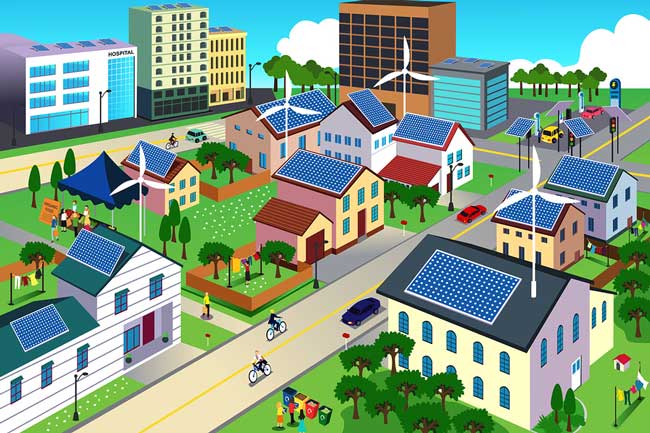
How widely are microgrids used?
Across the globe, microgrids power innovative people, businesses, utilities, and communities because they offer excellent reliability, cost savings, sustainability, and independence.
How many are there? How much energy do they produce?
A 2020 study by Guidehouse Insights found 1,639 microgrids in the United States, providing over 11,000 MW of power capacity – the same amount of energy as 5 million gallons of gas. Fossil fuels power 80% of those microgrids. However, the US Department of Energy is working to have 50% of microgrids renewable before 2030.
Microgrids are becoming increasingly popular around the globe. According to the International Energy Agency (IEA), about 1 million microgrids were operating worldwide at the end of 2016. By 2040, this number could reach 10 million.
When considering the scale of microgrid deployment, it’s worth noting that many reports only count the largest microgrids. Personal microgrids, like the portable ones and those powering small businesses and homes, now make up the majority of microgrids but are often ignored or categorized separately as mini-grids or nano-grids. Considering that, it’s possible to imagine everyone with microgrids within a few years.
Where can you find a microgrid today?
Microgrids are all around us. They go camping, propel yachts, electrify islands, show up after natural disasters, power critical facilities, and energize homes.
Almost every country on Earth uses microgrids.
The grid in Texas is highly unreliable, so residents have added solar microgrids to their homes to get backup power and lower energy bills. In 2020 over Valentines Day, a winter storm named Uri knocked out the power in the state for over a week. Thanks to Robert Soldat’s microgrid, his house kept the heat and lights on, allowing nearby friends to shelter there.
California families seek microgrid power. Over 25% of home solar systems are sold with batteries. Large institutions in the state, like Santa Rita jail, also have adopted microgrids in mass over the past decade.
Box Power has sent solar microgrids to many remote communities in Alaska. These solar microgrids provide year-round power and liberate towns from depending on shipping or flying-in fuel.
Above the arctic circle in Canada, the RAGLAN copper and nickel mine is only accessible a couple of months a year and by sea. The mine generates power every day of the year with a hybrid microgrid that uses a diesel generator and windmills.
Renewable microgrids are quickly replacing expensive, polluting, and supply chain-dependent diesel generators on islands in Puerto Rico, Hawaii, Tonga, and Greece.
Iluméxico has spent the last decade expanding electricity access in indigenous and hard-to-reach communities throughout Mexico. They sell small portable and home microgrids that power lights, radios, TVs, small appliances, and charge cell phones.
Gaming centers have recently opened in two rural off-grid towns in Uganda thanks to solar microgrids becoming available to local entrepreneurs.
And this is only a sliver of the places using microgrid power…
The cutting edge of microgrid technologies
The microgrid space has evolved rapidly, and there’s no sign that it will slow down soon.
Over the past decade, many advancements have come from clean energy technologies steadily getting more powerful and less expensive. That’s why most of the new microgrids use hybrid energy sources or are fully renewable.
Utility companies paying microgrid owners to use their electricity is another recent development, shortening microgrids’ payback period. Microgrids already usually pay for themselves with the savings on energy bill savings.
The newest entry to the microgrid space is electric vehicles (EV). With the introduction of bi-direction chargers, the cars’ batteries are now able to network with homes and utilities. They’re quickly becoming essential parts of the microgrid toolkit. There’s even a new networked microgrid in the UK whose only members are EVs.
How we make microgrids more accessible
- Lower their prices
- Make them more powerful
- Make them more portable
- Power more of them with clean energy
- Increase the number of providers
- Grow providers’ coverage territories
- More opportunities to sell their power
Stay ahead of the pack
Knowledge is power. Follow these sources to get the latest information on microgrids:
Microgrid Knowledge is an authority on fossil, hybrid, and renewable microgrids powering businesses and extensive facilities.
Greentech Media is one of the most trusted sources of clean energy news. Their microgrid newsfeed is a great place to track news and current events.
And, of course, join the Electric Islands mailing list for remarkable microgrid content sent directly to you.
